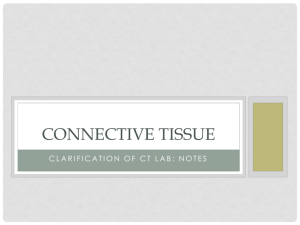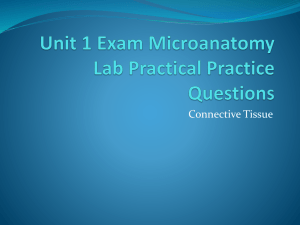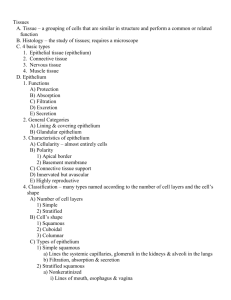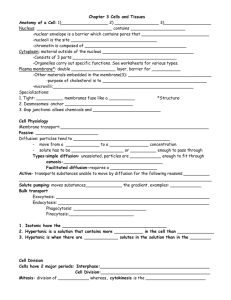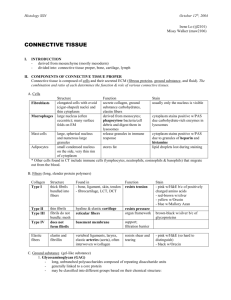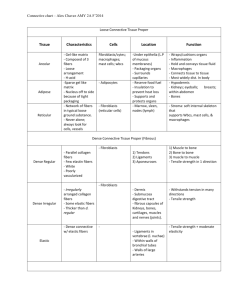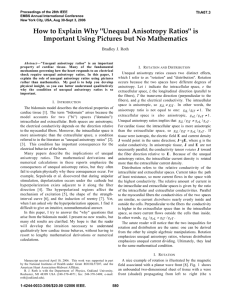Animal histology handout
advertisement
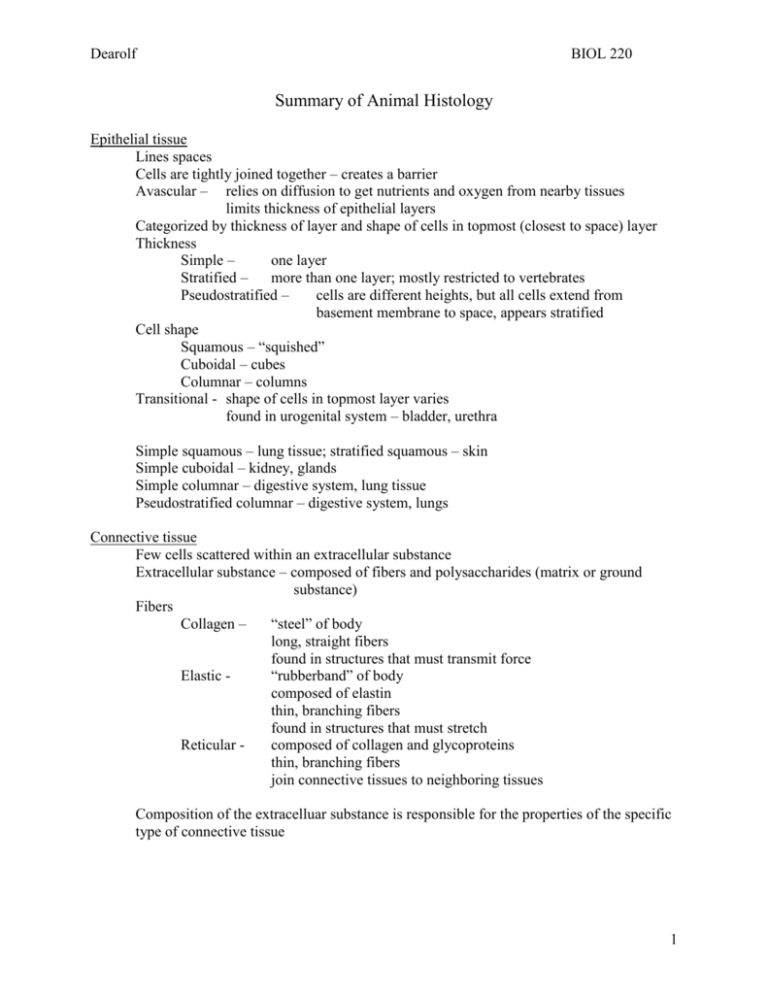
Dearolf BIOL 220 Summary of Animal Histology Epithelial tissue Lines spaces Cells are tightly joined together – creates a barrier Avascular – relies on diffusion to get nutrients and oxygen from nearby tissues limits thickness of epithelial layers Categorized by thickness of layer and shape of cells in topmost (closest to space) layer Thickness Simple – one layer Stratified – more than one layer; mostly restricted to vertebrates Pseudostratified – cells are different heights, but all cells extend from basement membrane to space, appears stratified Cell shape Squamous – “squished” Cuboidal – cubes Columnar – columns Transitional - shape of cells in topmost layer varies found in urogenital system – bladder, urethra Simple squamous – lung tissue; stratified squamous – skin Simple cuboidal – kidney, glands Simple columnar – digestive system, lung tissue Pseudostratified columnar – digestive system, lungs Connective tissue Few cells scattered within an extracellular substance Extracellular substance – composed of fibers and polysaccharides (matrix or ground substance) Fibers Collagen – “steel” of body long, straight fibers found in structures that must transmit force Elastic “rubberband” of body composed of elastin thin, branching fibers found in structures that must stretch Reticular composed of collagen and glycoproteins thin, branching fibers join connective tissues to neighboring tissues Composition of the extracelluar substance is responsible for the properties of the specific type of connective tissue 1 Dearolf BIOL 220 Connective tissue proper - vertebrates Loose connective tissue few scattered fibers in a semifluid matrix reservoir for fluids and salts found in subcutaneous tissue (beneath dermis of skin) look at areolar connective tissue Dense connective tissue – Specialized connective tissues Adipose tissue - densely packed fibers support and transmission of mechanical forces collagen fibers may be regularly or irregularly arranged found in tendons, ligaments, dermis of skin look at tendons ring-shaped cells food storage, insulation, support of organs found in subcutaneous layer with loose connective tissue found around certain internal organs Cartilage - cells (chondrocytes) separated from one another by extracellular substance extracellular substance contains collagen and elastic fibers chondrocytes found in lacunae (lake) avascular tissue wth no innervation flexible support found on articular (joint) surfaces of bones, tip of nose, external ear Bone - cells (osteocytes) separated from one another by extracellular substance extracellular substance contains collagen fibers and crystals of calcium (calcium phosphate) osteocytes found in lacunae highly vascular tissue compact bone – lacunae arranged in concentric circles around Haversian canals support and protection of internal organs; calcium reservoir; skeletal muscles attach to bones forms skeletal structure in most vertebrates Blood - consists of cells dispersed in a fluid extracellular substance extracellular substance – plasma plasma is mostly water; also contains proteins, salts, and soluble chemical messengers (hormones) RBC, WBC, and platelets transports oxygen, nutrients, wastes, and other materials found within the heart and blood vessels of circulatory system 2 Dearolf BIOL 220 Muscle tissue Muscle cell = muscle fiber Each muscle fiber contains many thin, longitudinal, parallel contractile units – myofibrils Myosin and actin – chief components of myofibrils, key role in muscle contraction Three types Skeletal – fibers are very long nuclei lie just under the plasma membrane of each fiber fibers are multinucleate under voluntary control attach to skeleton found in invertebrates and vertebrates make up skeletal muscles – biceps, gastrocnemius, etc. Cardiac - fibers join end to end, and branch and rejoin, forming complex networks nuclei are found in the center of each fiber one or two nuclei lie within each fiber – usually single nuclei/fiber characteristic feature – intercalated disks, specialized junctions where fibers join main tissue of the vertebrate heart Smooth - spindle-shaped fibers each fiber has a single, central nucleus found in invertebrates and vertebrates found in the walls of the digestive tract, uterus, blood vessels Nervous tissue Two types of cells – neurons and neuroglia Neuron specialized for transmitting and receiving signals typical neuron – cell body, dendrites, and axon cell body – contains nucleus dendrites – cytoplasmic extensions specialized for receiving signals transmits signals to cell body axon – transmits signals (nerve impulses) away from the cell body neurons communicate at junctions called synapses nerve – bundle of axons and dendrites ganglion – group of cell bodies Neuroglia - support cells provide connections between neurons and capillaries wrap the axons of some neurons – myelin sheath myelin sheath speeds up the conduction of nervous impulses 3

